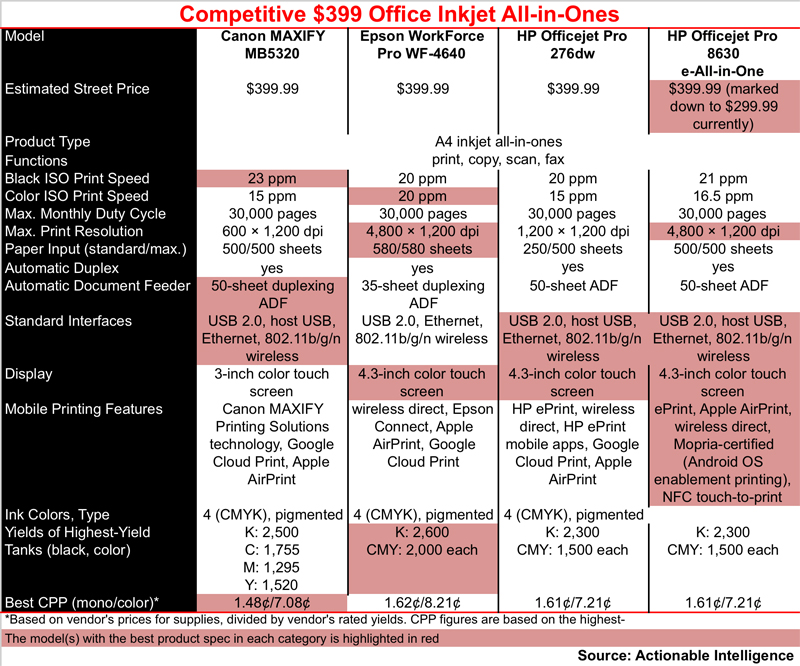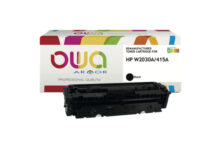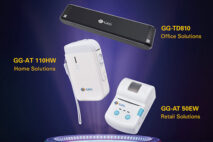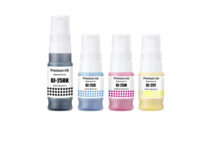On September 23, Canon U.S.A. announced a new line of office inkjets, dubbed MAXIFY. The new line is interesting because for many years, with a few exceptions, Canon has largely targeted consumers and small-office/home-office (SOHO) users with a lineup of sub-$200 PIXMA inkjet printers and all-in-ones. The new MAXIFY line, however, sports higher price points (up to $399) and includes features that would seem to better match the needs of office users.
Actionable Intelligence will cover all the details of the new product launch in an upcoming Product Briefing, That said, I wanted to provide my initial take on these models. While some may see the line as representing a move upmarket into the office inkjet space for Canon, I believe the line, which is clearly marketed as being for SOHO users rather than small- to medium-sized businesses (SMBs) or enterprises, is indicative of the fact that Canon realizes that the SOHO inkjet market has changed and that its products have not kept pace with these changes. The introduction of the MAXIFY line represents an attempt to keep up with where the inkjet market is headed in terms of feature sets (and even exceed in some areas) to better meet the needs of the small-office portion of Canon’s SOHO customers.
Unlike HP, which is attempting to woo SMBs and even enterprises with inkjet devices such as its Officejet Pro X line (with MFPs in this series selling for $650 to $800) and the Officejet Enterprise X series (with models selling for as much $2,799), Canon is betting that the majority of customers who purchase inkjet devices will remain consumers and SOHO users. But while the consumer inkjet market is enormous, print volumes in this market segment are waning fast. Thus, continuing to maintain its SOHO customer base has become essential for Canon. The MAXIFY line should provide Canon with the tools to meet this goal. As for moving its inkjet products into the SMB space or enterprises, Canon clearly is not interested in doing so, nor should it be. As the world’s largest laser engine and supplies manufacturer, Canon has a vested interest in maintaining laser technology’s standing as the dominant printing technology in office environments.
Canon Office Inkjets: Past, Present, and Brand Spanking New
Until now, Canon has targeted SOHO users mainly with its line of PIXMA MX “Office All-in-One Inkjets.” These devices are differentiated from Canon’s PIXMA MG “Photo All-in-One Inkjets” solely by the inclusion of fax functionality and automatic document feeders (ADFs).
Canon did experiment with offering more of a true office inkjet device with its launch of the PIXMA MX7600 (and some derivative models) all the way back in 2008. But the MX7600 represented Canon’s last innovative office inkjet platform, featuring a fully pigmented ink set and Canon Pigment Reaction (PgR) technology to hasten dry times and prevent smearing, and its last true attempt to move its inkjet line upmarket toward higher-volume office users. The adoption of this device was hampered both by page yields and relatively high cost per page compared to the new class of office inkjets since introduced by firms like HP and Epson.
Canon’s main reason for not experimenting more on the business inkjet front is obvious—protecting the stream of revenue and profit from its laser printer business, products it sells under both its own name and HP LaserJet devices with which it shares revenue with HP. HP, however, has long been interested in pushing inkjet technology in the office, precisely because while it has to share its LaserJet sales with Canon, it does not have to share sales of its homegrown inkjet devices with a partner.
Driven largely by HP and to a lesser extent Epson, the feature sets of SOHO inkjet devices have been changing dramatically since 2009. HP and Epson have rolled out office inkjets that deploy fully pigmented ink sets that are durable and are smear-proof and that use very high-capacity ink tanks, with yields that rival low-end laser devices. These inkjet devices deliver extremely competitive cost per page (CPP) figures, less than half the price of similarly priced laser devices. More and more office inkjets feature other business-friendly features such as robust duty cycles, large paper-input capacities, and duplexing automatic document feeders, not to mention a variety of mobile and cloud printing and scanning solutions.
Canon’s line of PIXMA MX devices, although they bore the moniker “Office All-in-One Inkjets,” fell behind in some of these areas. While adequate for consumer and home-office use, the PIXMA MX line fell short of being true office-class inkjet all-in-ones because they employ pigmented black but dye-based color inks, have relatively low-yield ink tanks, and deliver high CPP figures.
Canon is remedying this with the introduction of the MAXIFY lineup, which includes the single-function iB4020 and the multifunction MB2020, MB2320, MB5020, and MB5320. The new units deploy a fully pigmented ink set and use two different sets of standard- and high-capacity ink tanks with much higher yields than we have seen from Canon previously. Moreover, some of the machines offer best-in-class CPP, beating HP models, which held that distinction until now. The line also includes feature such as duplexing ADFs, 500 sheets of paper input, and improved cloud and mobile printing/scanning capabilities.
As noted above, Canon is not trying to take on SMB-oriented products such as HP’s Officejet Pro X machines. Instead, the main targets are popular products such as HP’s Officejet Pro 8610, 8620, and 8630 (see “HP Announces Instant Ink-Enabled Officejet Pro 8610, 8620, and 8630”) and Epson’s new PrecisionCore-based inkjets (see “Epson America Launches New PrecisionCore Inkjets for Small Businesses”).
As the table below shows, the new Canon products—here we look at the MAXIFY MB5320 in comparison with other $399 devices—hold up well against the competition and lead in some key areas. Perhaps most significantly, CPP on the MAXIFY MB5320 is low: 1.48 cents in black and 7.08 cents in color, based on our calculations. This beats HP’s until-now category leading CPP of 1.61 cents in black and 7.21 cents in color.
So while Canon may not be shaking up the market by pushing its inkjet products into new segments, the MAXIFY line is significant for Canon and the industry as a whole. After all, far more SOHO inkjet units are shipping that higher-priced SMB-oriented devices, and Canon’s high-yield ink tanks and low CPP story will give it bragging rights in this key market segment. That in itself is significant. When is the last time you heard anyone talking about a Canon inkjet with low CPP? That would be never. Canon, however, has gotten the message that to retain SOHO customers, that needed to change.
Look for Actionable Intelligence’s Product Briefing on the new Canon MAXIFY series next week. Product Briefings are available only to Actionable Intelligence subscribers. For more on how to subscribe, visit our Membership Options page.







